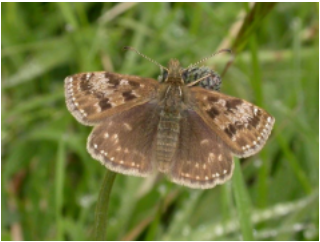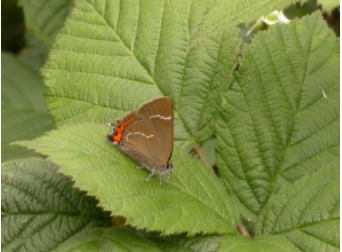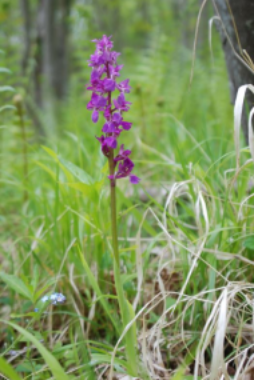Next Topic
Select SDGs to find out how we are taking action in support of the UN Substinable Development Goals
2021 ISRAEL CHEMICALS LTD. | ALL RIGHTS RESERVED

For over a decade ICL Boulby has worked with the Industry Nature Conservation Association (INCA) in monitoring and managing the wildlife which lives in close proximity to the mine. Key to this process is the Site Biodiversity Action Plan (Site BAP) operated by ICL Boulby within its operational area. The site BAP is designed to conserve the key habitats and species which live at the site, and is assisted by INCA annually.
The 2020 season was dominated by the impacts of the coronavirus pandemic. Access to Mines Wood was not possible between late March and early May 2020 due to Government health and safety guidance relating to the pandemic and this was once again the case from the autumn of 2020. This meant that some survey effort was not possible, but a significant amount of ecological survey work which had been agreed with ICL staff before the first lockdown, was possible to do. Elements completed:
2020 was highly unusual, particularly through the early part of the year. The winter of 2019-2020 was generally very mild, but with a series of storms and torrential rain through February. Spring then started very early, with glorious, almost unbroken warm sunshine through a two-month period between the end of March and late May. May, in fact, was the sunniest month on record, of all months.
This unusually forward season had an impact on the emergence of those butterflies, such as Dingy Skipper Erynnis tages, one the Tees Valley’s few ‘conservation priority species’ that flies in the early season. A visit to Mines Wood in good weather on 15th May showed two female Dingy Skipper butterflies flying in grassland on the disused mining spoil in the western part of the site and another a few hundred metres further east in the location where new grassland habitat above a repaired and reinstated culvert had created habitat suitable for the butterfly. This location had been seeded with Bird’s foot Trefoil Lotus corniculatus, the larval foodplant of this scarce butterfly, using a ‘hay cut’ that was taken from adjacent areas of the site a few years ago. This has subsequently led to a profuse and colourful growth of wildflowers in this location, including the larval foodplant, and pleasingly this sedentary butterfly species now seems to be in the early stages of expanding its range on the site. Good numbers of Common Blue Polyommatus icarus were also seen on 15th May, which is somewhat early for the first brood of this butterfly to be reaching its peak. This species uses the same larval foodplant as Dingy Skipper.

Later in the season, on 20th June, no Small Pearl-bordered Fritillary Boloria selene were observed on site. It was flying at this time in other parts of North Yorkshire so is now most likely to be extinct on the site, after not being seen for several years. No further surveys will be conducted in relation to this species, but it may be worth considering a re-introduction if the former habitat can first be reinstated.
On 17th July, a single White-letter Hairstreak Satyrium w-album butterfly was observed basking on leaves among the lower branches of an elm tree in Ridge Lane Wood. Elms Ulmus sp. are the larval foodplant of this species, which is another of the three ‘conservation priority species’ that occurs on the ICL Boulby landholding. It has been observed in this location once during a previous season, so
the continued presence of this elusive and often undetected species clearly indicates a colony existing among the elms in Ridge Lane Wood.

Moth recording was undertaken on 17th July 2020 in highly favourable weather. The site moth list for Ridge Lane Wood now stands at 109, with 36 species added in 2020.
The newly recorded species are a good indicator of the diversity of the woodland habitat in Ridge Lane Wood and represent many of the typical species that would be expected to occur in good quality woodlands in North-east Yorkshire. The larvae of these species are reliant upon a wide range of plant and tree species, which is one of the key reasons that moths are such a good habitat indicator. Although primarily woodland, the location surveyed contains smaller areas of specific habitats which are part of the rich mosaic of the site. This includes the woodland edge itself, which has important inherent value for specialised moths that feed on low-growing herbaceous plants of various species. It is important also to recognise that the woodland itself has variation. It contains a variety of deciduous tree species which are home to many of the newly recorded moth species, among a number of other invertebrates.
The annual survey on the bat hibernation roost in the disused mineral line tunnel in Mines Wood was carried out on 18th February 2020 by INCA’s bat-licensed staff.
Survey of the tunnel found six roosting Brown Long-eared Bat Plecotus auritus (BLE), mostly in, but also adjacent to the wall-mounted bat boxes. Boxes were checked by viewing the open slots from below, using a red-filtered torch so as to be very careful not to disturb the bats. The results were as follows:-
Box 13 – no bats but a good quantity of bat droppings underneath, with mould indicating that these were not fresh.
Box 14 – 1 BLE within the box, using the box slot closest to the wall. 1 BLE hanging above the box on the wall.
Box 15 – No bats or droppings.
Box 16 – No bats or droppings.
Box 17 – No bats. Water below box but some droppings evident
Box 18 – 4 BLE. 2 bats in the inner slot next to the wall. 2 bats in the adjacent slot.
Tree-mounted bat boxes were also checked by viewing the slots like above. Surprisingly, a box adjacent to Easington Beck, No. 9 contained one Brown Long-eared Bat. This would not be a usual overwintering location for this species, so it is postulated here that mild weather through February has allowed some level of bat foraging activity, at least for this bat. No other external boxes contained bats.
Despite the challenging circumstances in the human world, Spring 2020 was a glorious spectacle in Ridge Lane Wood, with a colourful display of Early Purple Orchids Orchis mascula comprising over 200 spikes being present on the wooded slopes above Easington Beck on 15th May.

Spring flowers were in profusion, with masses of other woodland flowers such as Bluebell Hyacinthoides non-scripta, Crosswort Cruciata laevipes, Primrose Primula vulgaris, Ramsons Allium ursinum and Red Campion Silene dioica being in full splendour.
The woodland was also rich in bird song, with Bullfinch Pyrrhula pyrrhula, Mistle Thrush Turdus viscivorus and Nuthatch Sitta europaea seen, and the melodious songs of our summer visitors the Chiffchaff Phylloscopus collybita and Willow Warbler Phylloscopus trochilus heard.
Historical discharge of insoluble mining waste (mine tailings) from the ICL (UK) Boulby mine (formerly Cleveland Potash) led to the localized accumulation of some insoluble material in the sediments of the Boulby sand patch. Ecological surveys have been performed annually by ICL (UK) in order to assess the extent of accumulation of this material and to monitor its environmental impact, including the impact of any compensatory dredging activity. Annual ecological monitoring surveys have been conducted since 1970 enabling comparison of historical data and the determination of long-term trends. Annual monitoring results are reviewed by the Boulby Mine Working Group (BMWG) comprising representatives from ICL, Ramboll, survey team, local authorities and the Environment Agency.
The overall ecological impact at Boulby is substantially less than in 1990.
The 2019 Benthic survey showed a reduction in overall species diversity compared to 2018. However, this species reduction was found not only at the tailings outfall, but also the local reference stations, indicating that wider environmental factors may be influencing these changes.
The Boulby mine working group categorizes sample stations as impacted, intermediate (A) and (B) and sparse, offshore background. This rating system showed an overall lower impact based on their criteria in 2019. In terms of severity, the overall ecological impact at Boulby is substantially less than in 1990.
The Boulby Mine discharge continues to influence the sediment physico-chemical composition at stations within the Boulby sand patch, which is reflected in the benthic macrofauna communities. However, compared with 2017 a decrease in the silt-clay fraction was recorded, determining a change in the benthic fauna composition towards species found in coarser sediments. The influence is mainly from sediment physico-chemical parameters, such as particle size rather than direct toxicity, since metal contaminant concentrations in sediment are generally below TEL threshold values indicative of no or low biological effect.
As production has shifted from potash to polyhalite, there is now less discharge into the North Sea.
The quantity discharged in 2018-9, is almost halved compared with 2017. As production in ICL Boulby has now completely shifted from potash to polyhalite, there will be less discharge into the North Sea.

